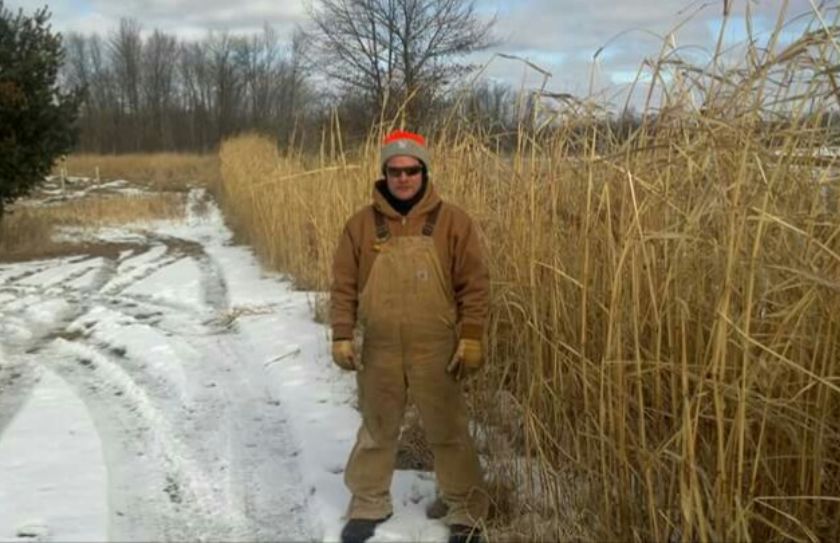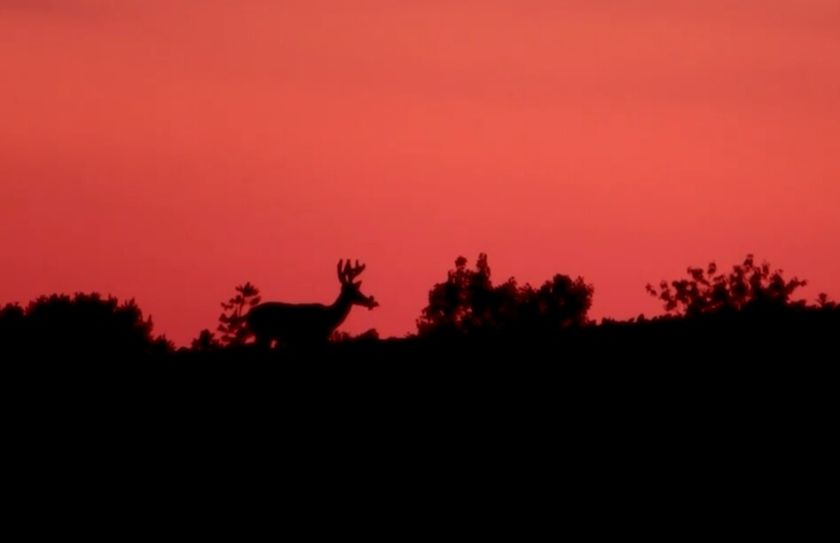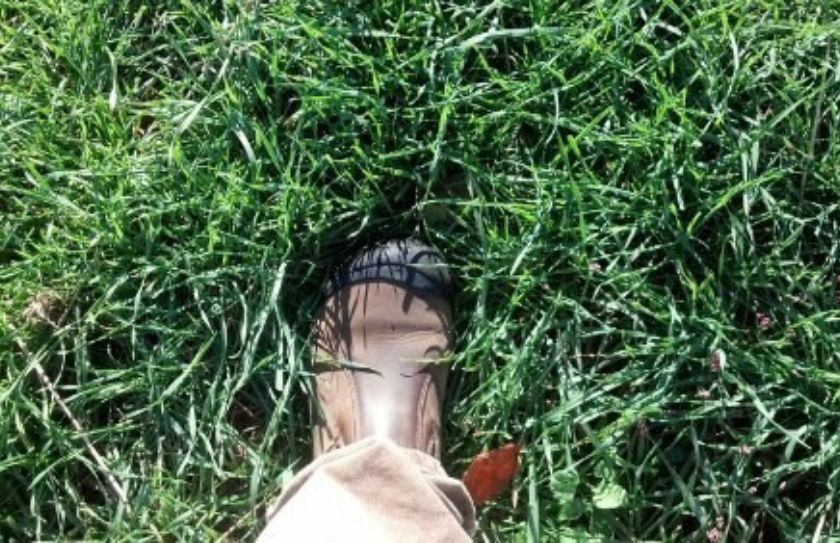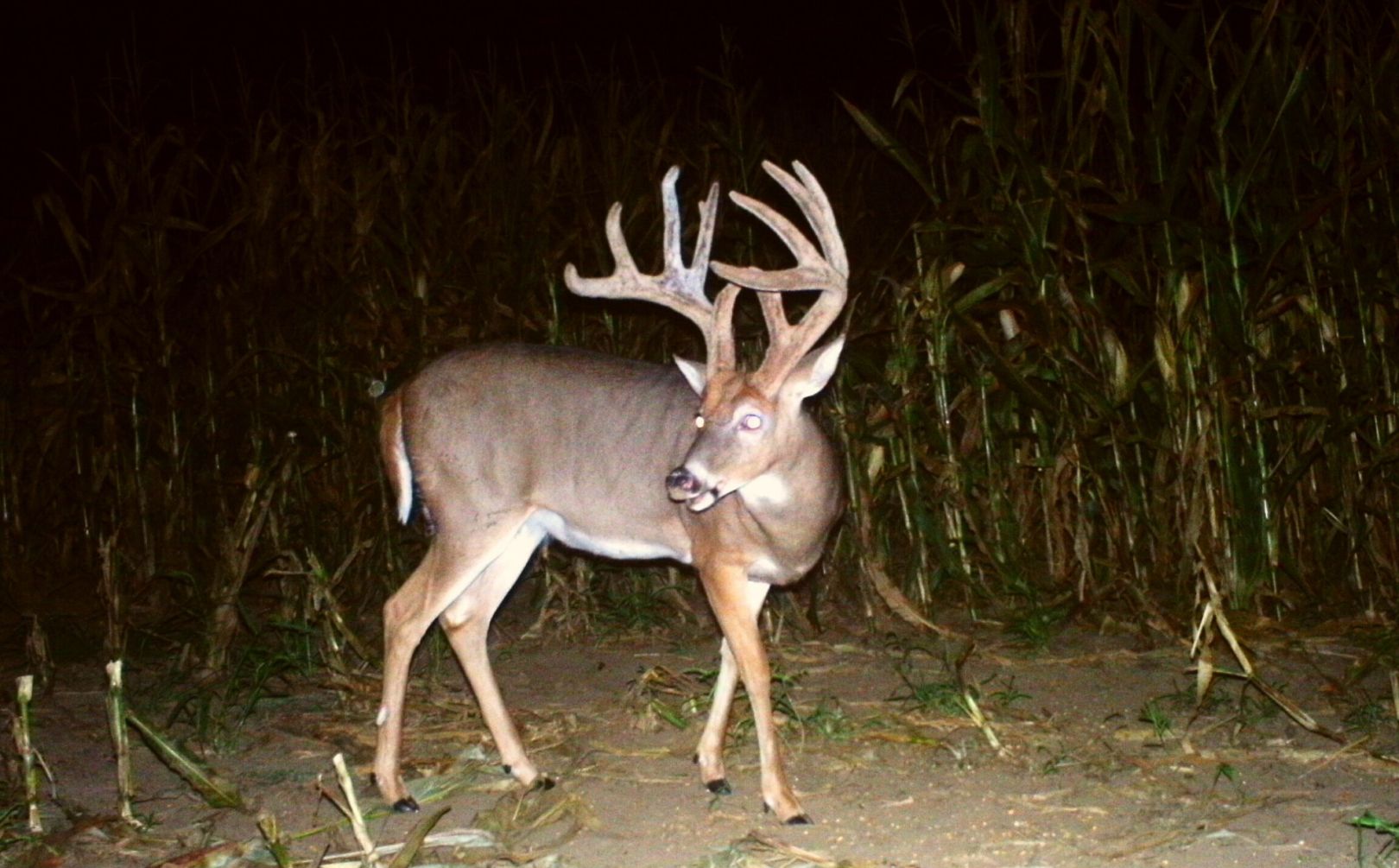
Each growing season, food plot failures rear their ugly heads in all shapes and sizes. Fields of beautiful bounty turn into fields of weeds, soil or both, and it happens at a much higher rate than one might think. There are many food plots that are destined for doom before the little green shoots of goodness even break the surface of the soil. However, you can easily avoid most food plot failures by starting with a stable base of seed varieties that you can count on to bring you reward, at rates as high as 100%.
Let’s get something straight when it comes to the topic of food plot failures: If it isn’t available during the Fall, in most cases the food plot is a failure. In the North 1/2 of the country deer have several times more food available to them, than they need. Even in many ag-less Northern portions of the country, reduced deer populations often find a bounty of natural forages growing within the local habitat that offer foraging opportunity at rates several times more than they need. While May through Septmber is a time of plenty in the deer woods, October through April is not. Even the value of low quality forages in October through April, trumps the value of high quality forages available from May through September. However, the nutritional needs of the local deer herd are not the only concerns. By offering adequate forages during the months that are lacking, you not only can create an effective hunting attack, but your ability to attract, hold, mold and shape a quality deer herd is substantial. When your food plot turns to soil, weeds or both during the deer season, you lack the ability to not only create and hunt a quality deer herd, but you lack the ability to offer forage to the local deer herd when they need it the most.
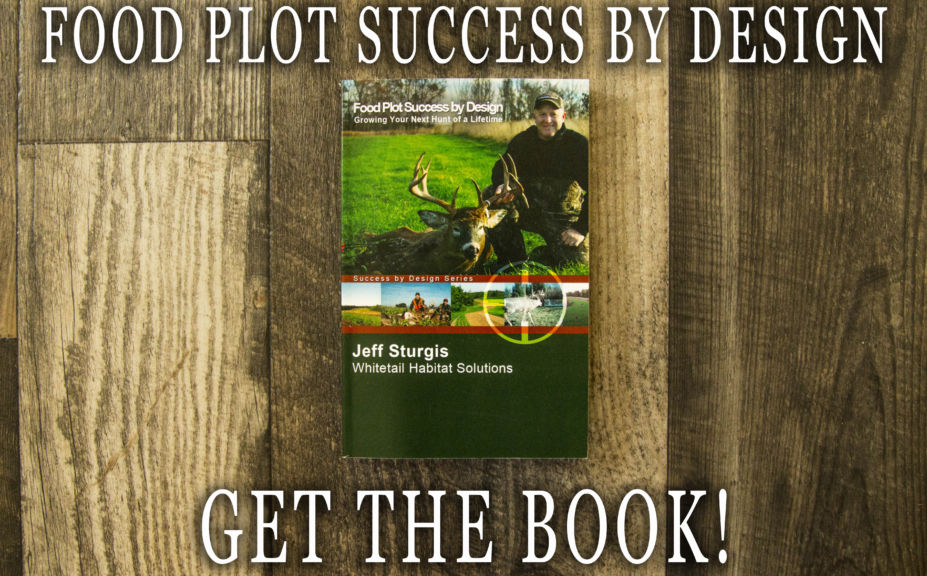
For more advanced food plotting techniques, be sure to checkout my Food Plot Success by Design
What are the top 5 food plot failures?
In my experience based on molding and shaping deer herds, as well as successfully hunting the most mature bucks within those deer herds, a food plot is a potential failure if it doesn’t offer any forage from at least September through January. That period of time is the absolute base amount of time that is needed to successfully create and hunt quality deer herds. At times there are satellite food plots that do not fit within the overal design of a parcel or may force deer off of the land, and those plots should be down to the dirt by hunting season. However, for food plots that you need working for you to attract, hold, mold, shape and create hunting opportunities for all of your whitetail efforts, those plots need to be growing from October to January. Several food plot varieties potentiall feature the greatest level of risk, before the seed even hits the ground. It is probably no suprise that the riskiest seed varieties, make up nearly all of the dozens of food plot failures that I personally see each year, in sometimes over 10 states per growing season:
1) Soybeans
Interestingly, I also list soybeans below within the food plot varieties that offer the highest level of potential reward. However, soybean plantings can fail in several ways that make them high on the list of food plot failures, and it isn’t even close. From totally consumed by the start of bowseason to completely ignored when mature and brown, soybeans can fail, and they fail often. Even a warm Winter can keep a local deer herd off of beans to the point that they rot in the Spring. If beans are a part of your food plot program, never count on them fully until you have a few years of experience with them, so that you can gauge the amount and timing of use. A good rule of thumb is that you will need 10 acres of stand-alone (no other complimentary plots) soybean plantings in heavily wooded locations and 5 acres in mix ag regions, in order to offer appreciable amounts of forage during the season.
2) Corn
I personally love corn and outside of the stable base of “can’t miss” varieties, corn should certainly be considered within the mix. However, corn needs a lot of space to make it through to it’s peak window of use, during the months of October thru December. Depending on where you are located, corn alone can be a pretty poor choice during September and early October, leaving you with a gapping hole of nutrition and attraction if planted alone. Small plantings can be ravaged by racoons and deer if there are no other large corn fields nearby. When you add in the growing factors of planting difficulty, lack of diversity and the number of acres needed, corn creates a high potential for failure within many small parcel food plot conditions.
3) Peas
Peas offer an interesting and unique form of food plot failure, because they are typically planted within a mix. The failure is often determined before you open a bag of seed, because the pea portion of the mix is such a small %. Peas are normally planted at a rate of roughly 100#s per acre and have a mature rate for full growth (Spring planted) of around 100 days. When peas are planted within a deer mix during the August or September, they not only experience a growing season that is reduced to an average of 60 days or less, they are subject to growing within cooler, shortened days. They do not come close to their target height or volume potential, and it wouldn’t be out of the question to plant peas at rate of up to 300#s per acre if planted in a straight, deer crop planting during August or September. That is, if you had a desire to fill the space of the plot.
Starting with only 15-20#s of peas in the mix, can leave you with a pea plant every 3-4′, which is not even enough to offer some candy to the plot. Pea Food Plot Plantings Fail when seeding rates aren’t appreciable enough to be available during the most critical months of the year. If you have a desire to see peas in your field and experience their high volume quality attractiveness during the Fall and early Winter months, then you need to offer adequate seed volumes. I recommend that you add at least another 75#s per acre to your favorite commercially produced Fall food plot blend and that you start with at least 100#s per acre if you are mixing your own.
4) Clover
Clover is one of the easiest seed varieties to grow however, once the first frost hits it stops growing, and can be quickly consumed, in particular in Northern locations. In Northern MI, I used to plant clover in my hunting access trails to offer Summer nutrition, without the risk of spooking deer during the season. Why? Because the clover was consumed to the dirt before October and offered little to no attraction. Depending upon your location and the size of your plantings, planting clover can offer a fairly high potential for food plot failures if the factors of frost dates, size of food plot, diversity and supporting alternate forages are not considered.
5) Brassica
If the region you are planting your food plot in contains mostly cover and a lack of quality, overall food sources within the adjoining habitat, a straight brassica planting may need to be the size of soybean to make it into the month of November. in 2002, one of my personal largest food plot failures involved a 2 acre brassica field. During Labor Day weekend I left my 15″ brassica plants for a week, with a trail cam in place to moniter any usage. I was really disappointed to return, only to find a field full of stems and deer pellets. I remember wondering where the huge herd of deer came from! However, the cameras revealed that a doe family group of 5 deer moved in and obviously fed heavily for about 8-10 days, completely conuming the juicy, mid-aged brassica leaves. Without the support of more graze resistent varieties along-side, my plot was destroyed.
But brassica food plot failures don’t always involve total consumption. In 2004 a stand-alone brassica planting on my SW WI lease was completely ignored until December. In fact, the lack of deer usage on that plot, created a lack of support for nearly 40 acres of some of are best hunting area on the property. Although setting up a great early January bow hunt, it still was a huge failure when it came to attracting, holding, protecting, molding and hunting a quality deer herd.
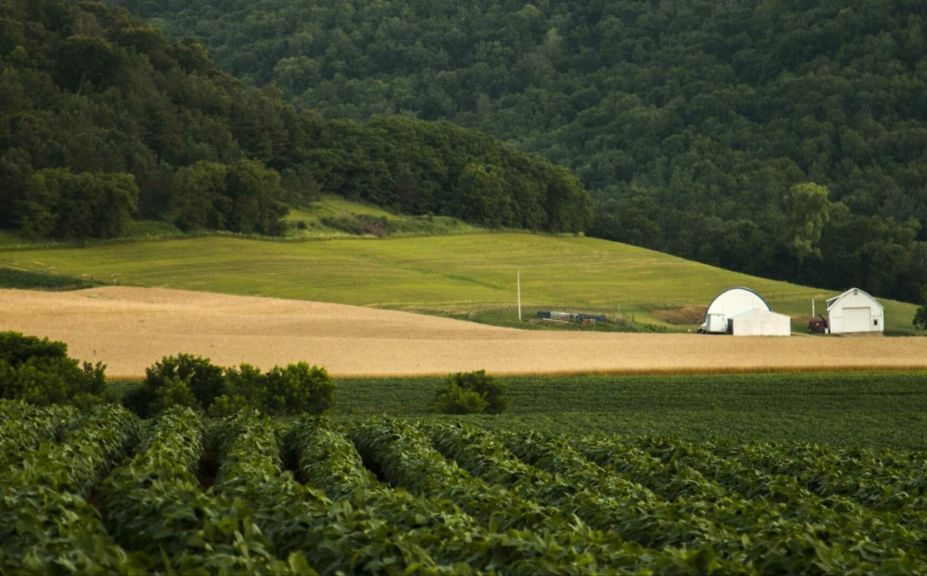
*Bountiful soybean fields are hit or miss when it comes to being able to count on them to attract, hold, protect, mold, shape and hunt a deer herd. However, they still may be right for you. To find out, make sure to read about the pros an cons for planting soybeans.
The Rewards of Food Plots Are Many!
Since the mid 90s, successful food plots have been a critical piece of my overall whiteail management and hunting success. Mistakes were minimized because I relied on quality information that yielded food proof results. And trust me when I was first starting out, those fool proof planting methods greatly helped. Interestingly, the most stable and reliable forage varieties that I used then, I still reliably use today. Reliability, is an often ignored but highly critical component of any quality food plot program. We aren’t farming for a living while growing cash crops through their peak maturity rates for optimum yields. Instead, we are planting food plots during short growing windows that are rarely, if ever, harvested. There is a huge difference. The following is a list of highly reliable food plot forage varieties that can create the most bang for you buck:
1) Winter Rye and Wheat
Winter Rye is about as fool proof a food plot vareity that you can find. In fact Winter Rye will grow in the lowest soil ph levels, poorest soil conditions and coldest temperatures, compared to any other food plot seed variety. The fact that it grows in the bed of my pick-up truck following food plot planting time each year, is testament to its reliability. Unless you plant Winter rye too early, it is nearly impossible to experience any food plot failures while planting this incredible variety.
2) Clover
Clover can be a great forage in much of the Midwest! If frosts and freezes do not occur until November or later, a quality food plot of clover can be a highly reliable forage. However, clover alone should rarely be relied upon to offer all of your forage needs. Clover can be a great base for an annual cool season cover crop and are a great compliment to a diverse food plot program. The first question I ask frequent clover users is how much the deer are attracted to it during the month of November. If your answer is “not much” or “they quit using it in September or October”, then it is time to consider another option.
3) Oats
Although they need a little more soil coverage to offer acceptable germination rates, Oats can be a great compliment to a cereal grain base of rye, or even a quality nurse crop to an early August planting of peas and clover. Oats can be reliably established, but as a stand-alone planting they can be limiting once frosts and freezes set in.
4) Brassica
Brassicas are an outstanding compliment to cereal grains, clover and peas. I first started combining brassicas with clover, rye and oats in 1999, and I have never looked back! For different reasons, my only brassica failures have occured when I planted brassicas as a stand-alone planting.
5) Soybeans
Why are soybeans listed as the greatest food plot failure, as well as one of the highest rewards? Because when appropriate, soybeans can really shine! If the size of the planting is large enough and you have covered your bases with alternative green forages of stability first, then soybeans may be right for you. When the conditions are cold, there is nothing better than hunting over a December bean field. However, if you have to sacrifice the rest of the season to get there, they aren’t worth it.
Diversity Is Key
The #1 food programs contain a high volume of dependable diversity. A base of greens alone can provide a huge amount of diversity, a variety of peaking forage times and can successfully cover the most important period of time from October to April. And if you can safely add corn and beans, your results can be even better because you can potentially experience even higher rewards, while still being grounded by your reliable base.
In the video below, I discuss more critical food plot timing strategies.
Conclusion
Does rye, oats or clover carry the same level of glamour that soybeans, corn and brassicas do? No, but 1, 2 or all 3 of them should be the stable base of any successful food plot system, simply because they work. In the end I would rather see that you enjoy having just an average food source that you can can count on 100%, than a potential high reward but high risk planting, that leaves you disappointed with a major food plot failure.
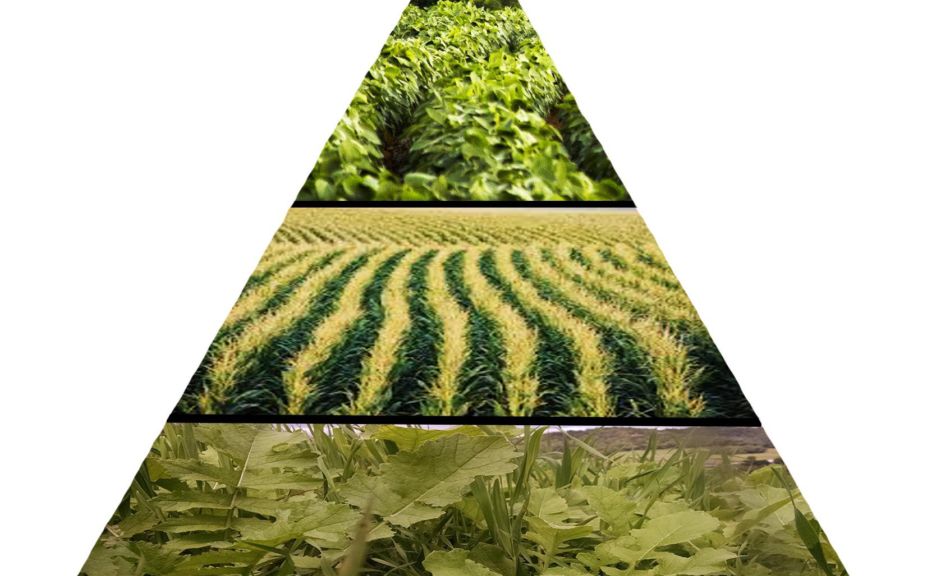
*Always make sure that you cover your base of greens first, before moving up the pyramid. A top-heavy food plot pyramid doesn’t take too much to tip over and fail.
I have experienced that it is beneficial to look at your food plot system as a pyramid. The reliable green combinations of rye, clover, oats, wheat and even brassicas should make up your fool proof Summer blend, followed by corn and then beans if the amount of space and conditions allow for them. The #1 way, over the past 20 years, that I have been able to target and harvest specific bucks on the private parcels of land that I manage, is that I have used reliably adequate food plots to attract deer, hold deer and control the movements of those deer. Even on public land, I rely on established natural food plots to control deer movements during the season. Whether on public or private land, the precense consistent food sources are an absolute key to success. You can’t afford a failure of you are spending your time and resources to create food plots. If your desires is to eliminate the potential for food plot failures this season, you can’t go wrong while sticking with a base of forage varieties that you can count on.
